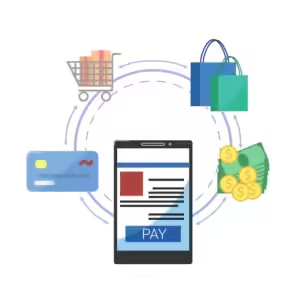Shopify checkout optimization
Introduction :
Shopify checkout optimization is the process of refining and enhancing the checkout experience on Shopify’s e-commerce platform to maximize conversions and minimize cart abandonment rates. It involves implementing strategies that streamline the purchasing journey, making it easier and more efficient for customers to complete their transactions online. Reducing cart abandonment is crucial for improving sales performance and ensuring a seamless shopping experience for users.
Understanding Cart Abandonment
The term “cart abandonment” describes the situation where customers add products to their virtual shopping carts but then depart from the website before completing the transaction. Various factors contribute to cart abandonment, including unexpected costs like shipping fees, lengthy or complicated checkout processes, concerns about payment security, and distractions during the final stages of purchasing. For e-commerce businesses, high rates of cart abandonment can significantly impact revenue and profitability, highlighting the importance of optimizing the checkout process.
Key Elements of Shopify Checkout
Shopify’s checkout process consists of several key elements designed to guide customers from selecting products to completing their purchases. However, common issues such as mandatory account creation, excessive form fields, and unclear navigation can frustrate users and lead to abandoned carts. Addressing these issues effectively is essential for improving conversion rates and enhancing user satisfaction.
Strategies for Shopify Checkout Optimization
Simplifying the Checkout Flow
One of the primary strategies for optimizing Shopify checkout is simplifying the checkout flow. This involves minimizing the number of steps required to complete a purchase and eliminating unnecessary form fields. A streamlined process reduces friction and makes it easier for customers to finalize their transactions quickly and efficiently.
Clear Call-to-Actions (CTAs)
Optimizing CTAs is critical in guiding users through the checkout process. Clear and compelling button text, strategically placed on each page, encourages customers to take the next step confidently. Visual cues such as arrows or contrasting colors can also help draw attention to important actions, improving usability and conversion rates.
Guest Checkout Option
Offering a guest checkout option allows first-time buyers to complete purchases without creating an account. This reduces barriers to entry and caters to customers who prefer a more straightforward purchasing process. Implementing guest checkout effectively involves balancing convenience with the need to gather essential customer information for future marketing efforts.
Addressing Security Concerns
Security is a top concern for online shoppers. Displaying trust badges, secure payment icons, and ensuring SSL encryption throughout the checkout process reassures customers that their personal and financial information is safe. Building trust through visible security measures is crucial for reducing hesitancy and increasing conversion rates.
Mobile Optimization
Streamlining the checkout process for mobile devices is crucial given the rise in the usage of smartphones for online shopping. Mobile-friendly design, including responsive layouts and simplified forms, improves usability on smaller screens and reduces abandonment rates caused by poor mobile experiences.
Minimizing Distractions
During the checkout process, minimizing distractions such as last-minute offers or unrelated information is vital. Focusing the customer’s attention on completing the transaction reduces the likelihood of abandonment and improves the overall efficiency of the checkout process.
Loading Speed and Performance
Users may become irate and abandon carts as a result of slow loading speeds. Optimizing page load speed and overall performance ensures a seamless experience for customers, enhancing satisfaction and encouraging repeat purchases.
Providing Multiple Payment Options
Offering diverse payment options accommodates varying customer preferences and increases the likelihood of completing transactions. Integrating popular payment gateways and alternative payment methods supports a broader customer base and improves overall checkout flexibility.
Remarketing and Recovery Emails
Implementing automated email strategies for abandoned cart recovery can reclaim lost sales opportunities. Personalized follow-up emails remind customers about their abandoned carts, encouraging them to return to complete their purchases with incentives or helpful reminders.
A/B Testing and Optimization
Continuous improvement through A/B testing allows businesses to refine their checkout process based on data-driven insights. Testing different layouts, CTAs, and payment methods helps identify the most effective strategies for optimizing conversion rates and enhancing user experience.
Conclusion :
In conclusion, Shopify checkout optimization is crucial for reducing cart abandonment rates and maximizing sales conversions. By addressing usability issues, enhancing security measures, and leveraging customer-centric strategies, e-commerce businesses can create a streamlined and trustworthy checkout experience that enhances customer satisfaction and drives growth.
FAQs About Shopify Checkout Optimization:
What is Shopify checkout optimization?
Shopify checkout optimization refers to enhancing the checkout process on Shopify’s e-commerce platform to reduce cart abandonment and improve conversion rates.
Why is reducing cart abandonment important?
Cart abandonment represents lost sales opportunities. By optimizing the checkout experience, businesses can recover potential revenue and improve profitability.
How can I improve mobile optimization for Shopify checkout?
Focus on responsive design, minimize form fields, and ensure fast loading times on mobile devices to enhance usability.
What are trust badges, and why are they important in checkout optimization?
Trust badges are symbols that indicate secure transactions. They build customer trust and reassure shoppers about the safety of their personal information.
What role does A/B testing play in checkout optimization?
A/B testing allows businesses to compare different checkout designs and strategies. It helps identify which approach leads to higher conversions and better user experience.


